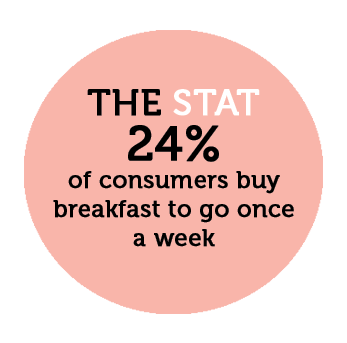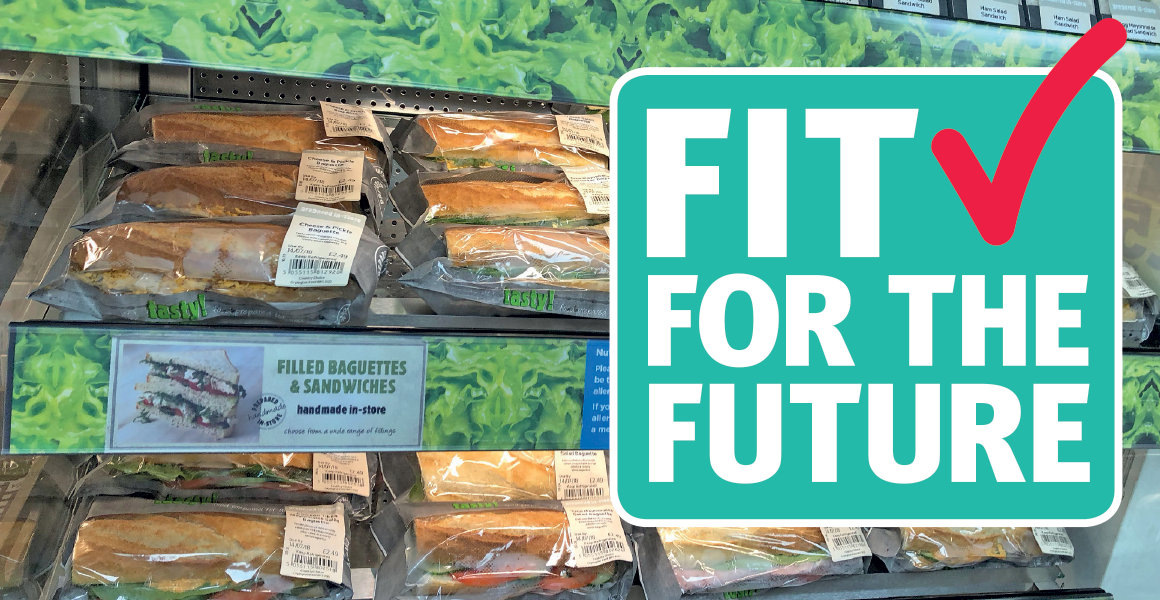The rewards are huge for retailers that can succeed in food to go, but the category is not without its challenges. Uldduz Sohrabi Larki speaks to Jack Matthews to find out how he drives success
 Food to go is booming for independent retailers. The market is set to be worth £23.5bn by 2022, with convenience stores and forecourts growing by 6.1%.
Food to go is booming for independent retailers. The market is set to be worth £23.5bn by 2022, with convenience stores and forecourts growing by 6.1%.
Retailers need to approach the category cautiously to work out where the opportunities are in their area. Jack Matthews, owner of Bradley’s Supermarkets in Leicestershire, introduced food to go into his store 10 years ago, but the demands from shoppers are constantly evolving.
“Food to go has changed significantly over time. People are becoming more demanding about what they want. At the same time, the population is becoming more diverse, which has an influence on the flavours,” he explains.
“Customers are becoming more health conscious and this is a big trend that we had to tap into in the past years,” he adds.
Catering to everyone’s tastes is a tough task, but by starting with the most popular tastes and then broadening into speciality and premium options, you can reap the rewards.
 1) How should I get started
1) How should I get started
You must hit the ground running when introducing food to go because reputation is everything when it comes to the category’s success.
“This category can be so good for your business, but also disastrous if not done properly,” says Matthews.
“It’s a mistake to think that it is easy in the beginning. It requires planning and a willingness to organise, just like any part of the business – but more so with this category as we are looking at food wastage or loss of interest if the right balance isn’t met.”
Nick Widdowson, merchandising and creative controller at Unilever Partners for Growth, says retailers should conduct a quick survey to find out what the demand is.
“It is crucial that retailers make sure their store caters to their shoppers’ main missions and several factors affect these – whether the store is in a high transient area or a residential neighbourhood, how affluent the area is, even how close parking is,” he says.
Food to go is the second most popular shopping in convenience, just after top-up shopping, so it is likely that your shoppers will be happy to help you shape the category for their benefit.
 2) What suppliers should I work with?
2) What suppliers should I work with?
Snacks and drinks can be supplied by your traditional suppliers, but sandwiches, pastas and salads are more complicated.
You need to decide early on whether you will work with a supplier or make your own food to go. Both methods have positives and negatives – you need to work out what is right for you.
Matthews says that when making your own salads and sandwiches, you carry more responsibility – but margins can be higher. But this needs to be weighed out with cost effectiveness of the preparation time and area.
In his store, he provides both options. “Having the right choices for your customers is important for increasing the basket spend,” he explains.
He has invested in creating kitchen space to make his own salads and sandwiches, but not every retailer have stores that are big enough.
“Food wastage can really be a problem. Instead of earning, you could just be making a lot of effort and it may not be a cost-effective solution for all retailers. It is really about finding the right balance.”
For retailers who want to make smaller first steps into food to go, there are more companies popping up that offer solutions.
Many retailers are turning to companies such as Urban Eat or Ginsters, and symbol group and franchise retailers can benefit from options from their operator.
 3) How can I reduce waste?
3) How can I reduce waste?
One of the biggest challenges in food to go is managing waste and maintaining standards, according to Matthews. “Often, retailers start out thinking that this is an easy category. But it really can be challenging in the beginning,” he says.
To sell food to go safely and legally, you need to adhere to legislation and food hygiene standards.
It is best to check this with your local council to find out what the regulations are for you to set up a food preparation corner before you start.
Waste is also a threat to running a successful food-to-go operation, but there are ways to combat it.
Reducing the price towards the end of the day is a popular tactic to encourage impulse sales and cover your costs.
Addo Food Group’s Michael Holton says: “Enticing sales offers are key to encouraging impulse purchases.”
4) What foods should I choose?
 “Another common challenge retailers face is when they sell too many options,” says Matthews.
“Another common challenge retailers face is when they sell too many options,” says Matthews.
It’s far better to sell a handful of quality lines than try to juggle too many. According to Matthews, starting off with fewer options and learning from what customers buy and what works is the way to determine what to introduce.
But healthier and more daring flavours are a must. “Customers have way more sophisticated palates now than they used to,” he adds.
In recent years, Matthews says that he has seen a massive shift to healthier options.
You should also adjust your food according to different seasons and bring in limited-edition products to increase excitement.
“During summer, we’d recommend relocating chillers near the till, or investing in a smaller freestanding chiller to display a variety of fresh impulse snacks and drinks,” says Addo Food Group’s Michael Holton.
 5) How can I drive sales?
5) How can I drive sales?
With its enticing look and smell, food to go lends itself to creating fantastic displays, which are essential to growing sales.
Unilever Partners For Growth’s Nick Widdowson says: “Fresh food creates an inspiring, visual experience for the shopper and is a great place to start the shopping journey through the store.”
He adds: “Stocking the right products, maintaining availability and merchandising fixtures with appropriate adjacencies is key to maximising the opportunity. When shoppers can’t see a simple solution to their food-for-now mission, they will go elsewhere.”
Offering customers a range of freshly-baked products is a simple, cost-effective way for convenience retailers to attract new food-to-go shoppers and increase basket spend at lunchtime. Aryzta Food Solutions offers a range of food to go to help retailers compete head-on with high-street foodservice outlets,
Paul Whitely, Head of Marketing at Aryzta Food Solutions, says: “We have a variety of options for retailers, from ovens and equipment, right through to schemes whereby retailers who work with us and meet the appropriate level of sales can loan equipment from us through a partnership agreement.”
“This means that in some cases the only cost that the retailer may have to consider is purchasing the stock, and investing some staff time to bake and set up the display.”
Food to go has to be backed by up by an equally compelling range of drinks.
Adrian Troy, marketing director at Barr Soft Drinks, says that offering chilled soft drinks also plays a vital role as impulse sales account for more than three-quarters of all soft drinks sales in convenience – and consumers prefer these drinks to be chilled. So, make sure you drive sales of small-format drinks by keeping them chilled.
With good planning and well-trained staff, retailers can reap all of the benefits that a hot food to go solution provides.
Wayne Thompson, FrieslandCampina customer marketing manager, says that creating meal deals and ensuring high availability are crucial for success to meet the demands of this type of shopping mission.
“Morning times and lunchtimes, especially between 11am to 3pm, are so important to drives sales, so make sure you stock up early on,” he adds.
Impulse is key for some lines, but when it comes to food to go, suppliers advise to give shoppers time to consider and make their decisions.
Sorcha Norris, brand manager at Propercorn, says: “Placing food-to-go products near the till is too late in the buying process, as we find that customers usually have already made their decision prior to this.”
How Retail Express readers are driving sales with food to go
36%
have introduced healthier options in the
past two years
28%
tackle waste by donating to food banks
35%
are looking for more advice to drive food to go
13%
say food to go is the most important thing
to their store’s profits
68%
always have products in stock

Retailer view
Alan Fincham
One Stop Attleborough
Norfolk
“We started offering ready meals in our store 11 years ago, and began making our own food in-store around seven years ago.
“It’s a growing market and everyone has jumped on it. We buy ours from our symbol group.
“My advice would be to start small and get to know your customers with this shopping mission. We generally have very affluent customers, but our food to go is mainly tailored to builders and school kids.
“Last year, we brought in a Subway. As this is an international brand, customers really trust the quality of the food and this has helped us drive this shopping mission even more.”



Comments
This article doesn't have any comments yet, be the first!